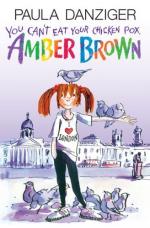|
This section contains 395 words (approx. 2 pages at 300 words per page) |
Chicken pox is a fairly common contagious disease of childhood caused by the varicella virus. Its primary symptom is a skin rash, which may be accompanied by fever, headache and muscle aches. The rash usually begins with red blotches on the back or the chest which then erupt into vesicles with a characteristic teardrop shape that enlarge and fill with clear liquid. As the vesicles dry up and form scabs in one part of the body, new vesicles erupt in another area of the body. (Chicken pox got its name because people thought the rash looked like chick peas lying on the skin.)
The time between exposure to the virus and the appearance of the symptoms ( incubation period) is fairly long, ranging from fourteen to twenty-one days. It is communicable from a few days before the onset of symptoms until all the vesicles have crusted over, giving chicken pox (along with the measles) the highest rate of communicability. It is thought to be spread by infected droplets coming from the nose or throat. There are often epidemics of chicken pox, especially in winter and early spring. The virus which causes chicken pox is the same virus that causes shingles (a skin disorder usually found only in adults) as discovered by Dr. Thomas Weller while a researcher at Children's Hospital in Boston.
The general treatment for chicken pox is to keep the child clean and comfortable for the course of the disease which may last two weeks. Topical medications and cold compresses are often applied to prevent itching, as scratching the vesicles may cause scarring or secondary infection by strep or staph bacteria. In some severe cases, antihistamines or an antiviral drug such as acyclovir may be recommended to shorten the course and severity of the disease. Usually a child who has chicken pox once has lifetime immunity, but there are examples of recurrence in adulthood. In March 1995, a vaccine for chicken pox was approved for use in the United States. The varicella vaccine is called a live vaccine because it contains live varicella zoster virus (VZV), which is responsible for the chicken pox rash. The vaccine is especially effective against the symptoms of chicken pox, including preventing them from progressing to a severe stage. Studies are still under way to determine how effective the vaccine is in actually preventing the disease.
|
This section contains 395 words (approx. 2 pages at 300 words per page) |


